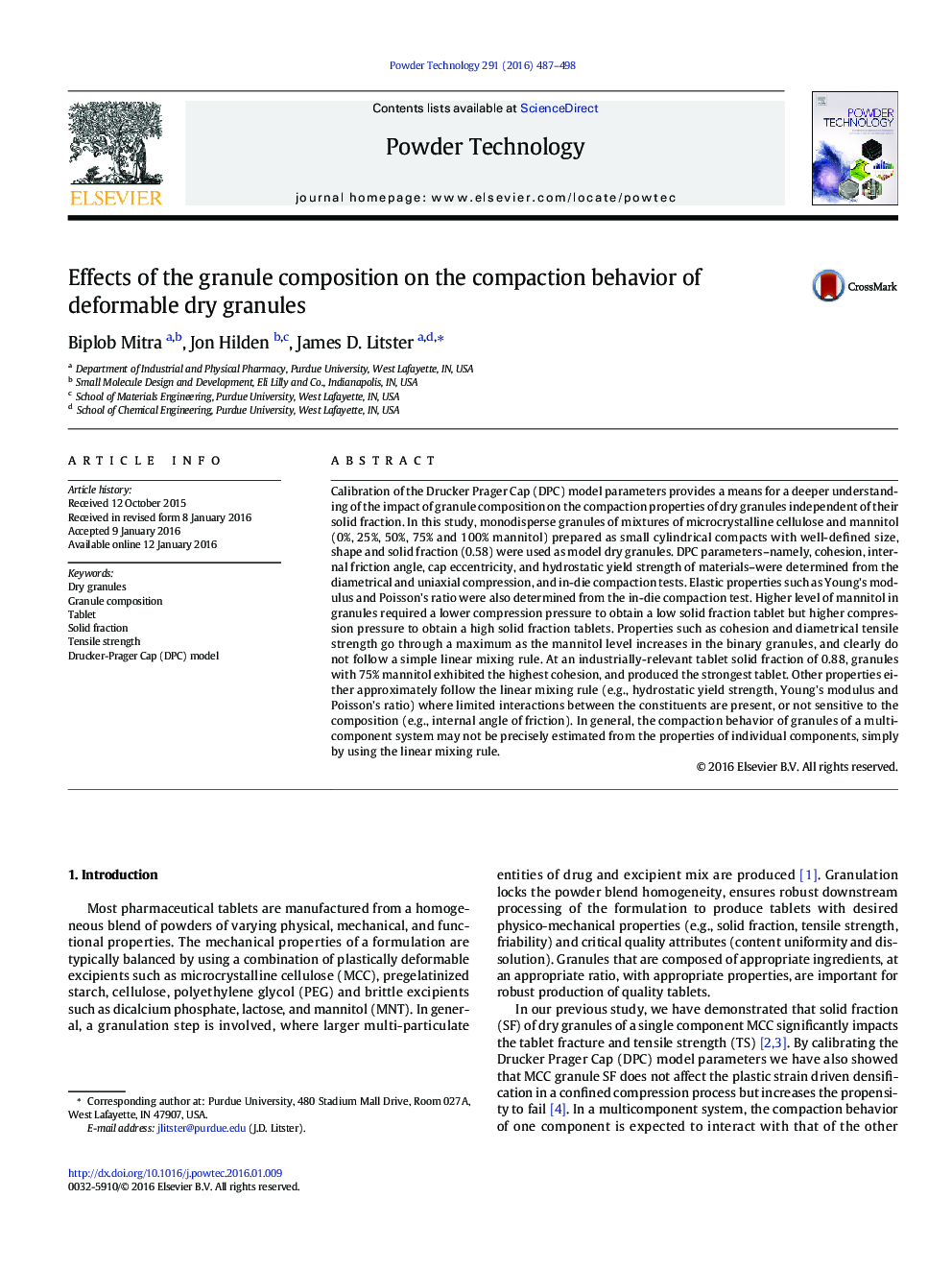| Article ID | Journal | Published Year | Pages | File Type |
|---|---|---|---|---|
| 235035 | Powder Technology | 2016 | 12 Pages |
•Binary mixtures of MCC/mannitol were used to produce monodisperse granules.•The Drucker Prager Cap (DPC) model was calibrated for tablets made from the granules.•Granule composition significantly impacted the yield cap surface of the DPC model.•Cohesion and tablet tensile strength passed through maxima with mannitol level.•All other parameters followed linear mixing rule or were not sensitive to composition.
Calibration of the Drucker Prager Cap (DPC) model parameters provides a means for a deeper understanding of the impact of granule composition on the compaction properties of dry granules independent of their solid fraction. In this study, monodisperse granules of mixtures of microcrystalline cellulose and mannitol (0%, 25%, 50%, 75% and 100% mannitol) prepared as small cylindrical compacts with well-defined size, shape and solid fraction (0.58) were used as model dry granules. DPC parameters–namely, cohesion, internal friction angle, cap eccentricity, and hydrostatic yield strength of materials–were determined from the diametrical and uniaxial compression, and in-die compaction tests. Elastic properties such as Young's modulus and Poisson's ratio were also determined from the in-die compaction test. Higher level of mannitol in granules required a lower compression pressure to obtain a low solid fraction tablet but higher compression pressure to obtain a high solid fraction tablets. Properties such as cohesion and diametrical tensile strength go through a maximum as the mannitol level increases in the binary granules, and clearly do not follow a simple linear mixing rule. At an industrially-relevant tablet solid fraction of 0.88, granules with 75% mannitol exhibited the highest cohesion, and produced the strongest tablet. Other properties either approximately follow the linear mixing rule (e.g., hydrostatic yield strength, Young's modulus and Poisson's ratio) where limited interactions between the constituents are present, or not sensitive to the composition (e.g., internal angle of friction). In general, the compaction behavior of granules of a multicomponent system may not be precisely estimated from the properties of individual components, simply by using the linear mixing rule.
Graphical abstractFigure optionsDownload full-size imageDownload as PowerPoint slide
